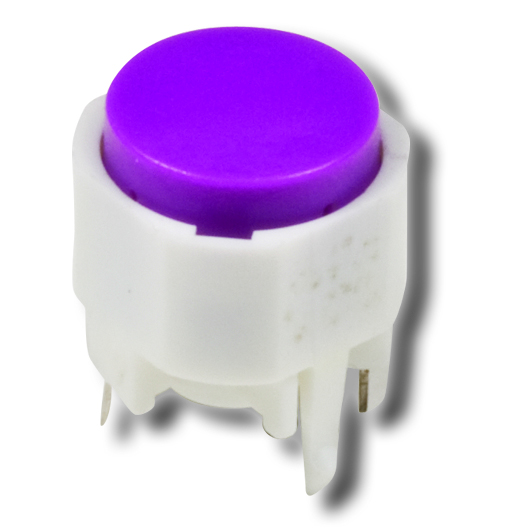When it comes to choosing the right components to power a medical device, the options can seem endless. Whether it’s a blood glucose monitor for a diabetic patient or a surgical robot for an orthopedic procedure, lives may be at stake if these devices fail to function properly. With so many choices on the market – and little room for error – selecting the right ones can be a real challenge.
Fortunately, there are teams of dedicated design engineers who evaluate the best components for each device – from the nuts and bolts that hold them together to the high-performance materials that are durable enough to withstand the challenging environments of most medical applications. However, this is no easy feat and there are many factors that come into play when designing and selecting components for a medical device.
By evaluating the four factors below prior to manufacturing the device, design engineers can be confident that they’re selecting the best possible components for the job.
Performance & Reliability
There are few areas beyond the medical industry where the performance and reliability of the components which make up a device are as critical. In many medical products, electromechanical switches function to set up, configure, and operate the end device. While these “operator interface” switches are often considered an afterthought by many designers, there are many applications where the switch can be a critical component in the operation of the product.
Consider the rapidly growing role of innovative drug delivery systems in home health care. For chronic conditions such as asthma, COPD, diabetes, and multiple sclerosis, there is often a need for medication to be administered at regular and frequent intervals. To address common issues such as poor compliance, improper dosing, and improper drug administration, various drug delivery systems have emerged such as auto-injectors, measured dose inhalers (MDI), and dry powder inhalers (DPI). In many cases, electromechanical tact and detect switches are used to start the drug delivery cycle and verify correct placement of the medicine cartridges.
While these switches may only be used a few times, they need to perform properly and reliably given that oftentimes the drug delivery device is used in an emergency situation such as a diabetic or allergic reaction. If not properly designed, switch contacts can corrode in certain environments and not be able to conduct the low-level signals used in these battery-operated products. It’s critical to ensure that the component supplier has a heritage with mission-critical medical applications, as well as a reputation for reliability.

C&K’s K12 Series High Performance Key Switches have a long product life expectancy (Credit C&K)
Size
The bigger is better mentality couldn’t be further from the truth in regards to medical device design. In fact, smaller devices are often more desirable as products become increasingly smarter. Take home monitoring devices, such as wearable cardiac monitors or insulin pumps. Patients don’t want to tote around bulky attachments – especially on a wearable device that needs to be with them 24/7. Adding communication capabilities to support growing trends such as Telehealth means adding antennas, transmitters and additional circuitry, which leaves less room for traditional components such as switches. However, while the switches that allow the user to interact with these products need to take up less space than before, they still have specific performance requirements and need to operate reliably for many years.
Rising healthcare costs, legislation, and demographics are forecasted to drive huge growth in home healthcare in the coming years. One key trend observed in this area is the convergence between wearables products (such as activity trackers) and healthcare devices. A key application showing a lot of potential growth activity is the cardiac monitoring “patch” frequently used to check for heart arrhythmias. Products from companies such as Bardy Diagnostics and iRythm Technologies can perform electrocardiogram (ECG) monitoring without the cumbersome leads required from traditional Holter monitors, and both accuracy and patient comfort are improved with these new products. Miniature tact switches are often used to turn the device on or off and record cardiac events for future analysis. These switches must be small, resistant to body fluids, and conform to the flex circuit assemblies typically used for these devices.
Environment
Medical devices, especially surgical and critical care equipment, need to hold up in a diverse spectrum of conditions. From blood and body fluids to harsh sterilization chemicals, corrosion resistance is one of the most important factors when narrowing down the appropriate components. In the hectic atmosphere of hospital operating and emergency rooms, equipment is moved around quickly and personnel don’t always have the luxury of being gentle or using equipment as recommended.
One example of this is the electrosurgical blades and “pencils” used to cut body tissue during various surgical procedures. Companies such as Ethicon (Johnson & Johnson) make a variety of these products which often use electromechanical switches to energize the device and initiate cutting. Given the nature of the typical surgical environment, these switches need to be able to tolerate blood and other body fluids and still perform reliably. The switches typically need a high sealing level (generally IP67 or IP68) as well as contact systems designed to resist corrosion.
Designing devices to withstand impact, the effects of moisture, or other environmental factors is vital for the product to work reliably for years, even in challenging situations. Environmental specifications can significantly restrict these choices, so it’s best to determine early on if your environment is going to limit your choice of components. Work with manufacturers to be sure that their products meet any specific requirements you may have.
.jpg)
C&K’s PTS830 Switch powers pain management products, such as electrotherapy devices (Credit: C&K)
Customizability/Flexibility
Despite a huge number of suppliers and an even bigger catalog of commercial off-the-shelf components, most design involves some compromises to provide the exact performance required. Although customizing components sounds complicated, many suppliers are willing to make modifications to existing products to save an OEM time, cost and headaches. A good supplier will take the time to understand the requirements of the application and make recommendations around the best way to integrate their component.
Consider the case of a major supplier for electro-surgery instruments. With minimally invasive procedure such as laparoscopy, the surgeon manipulates instruments inside the body while looking through a camera. The need to maintain focus on the camera means the surgeon needs to operate the instruments without seeing them. In this situation, the tactile feedback from switches on the instruments is critical. A major switch supplier worked with the customer to customize a multi-function pushbutton switch in order to achieve the exact sound and feel desired by the surgeons. This feedback is so critical that many surgeons will not use the instruments with any other switch.
Of course, some solutions are easier than others, but think of the supplier as a partner and collaborate with them to determine a realistic timeline, the cost of customization and how they plan to test and troubleshoot the part if it’s not functioning properly.
Author Bio
Mike Bolduc is Global Marketing Manager at C&K, where he is responsible for leading market strategy and global growth efforts for the industrial and medical business segments.


